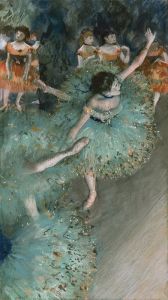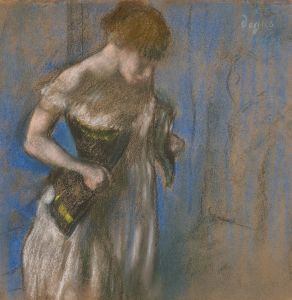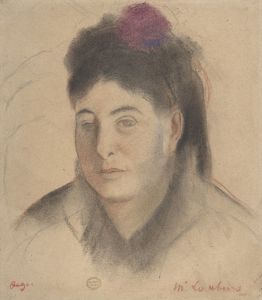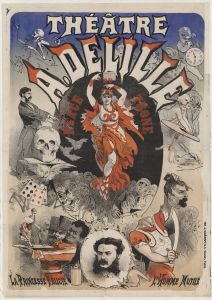
Aux Ambassadeurs
A hand-painted replica of Edgar Degas’s masterpiece Aux Ambassadeurs, meticulously crafted by professional artists to capture the true essence of the original. Each piece is created with museum-quality canvas and rare mineral pigments, carefully painted by experienced artists with delicate brushstrokes and rich, layered colors to perfectly recreate the texture of the original artwork. Unlike machine-printed reproductions, this hand-painted version brings the painting to life, infused with the artist’s emotions and skill in every stroke. Whether for personal collection or home decoration, it instantly elevates the artistic atmosphere of any space.
Edgar Degas, a prominent French artist known for his contributions to Impressionism, created a diverse range of artworks that captured the nuances of modern life in the late 19th century. Among his extensive oeuvre, "Aux Ambassadeurs" is one of the works that reflect his keen interest in the vibrant social scenes of Paris. However, detailed information specifically about "Aux Ambassadeurs" is limited, and it is not one of Degas's most extensively documented pieces.
Degas was renowned for his ability to portray movement and the human form with exceptional skill, often focusing on subjects such as ballet dancers, racehorses, and women in various settings. His work frequently depicted the lively atmosphere of Parisian society, including cafes, theaters, and other public venues. The title "Aux Ambassadeurs" suggests a connection to the Café des Ambassadeurs, a well-known café-concert venue in Paris during Degas's time. These venues were popular for their musical performances and were frequented by a diverse cross-section of Parisian society.
Degas's technique often involved a combination of drawing, painting, and printmaking, allowing him to explore different textures and effects. He was particularly skilled in using pastels, which became a dominant medium in his later works. His approach to composition and his use of light and shadow were innovative, contributing to the development of modern art.
While specific details about "Aux Ambassadeurs" are scarce, it can be inferred that the work likely captures the essence of Parisian nightlife and entertainment, consistent with Degas's interest in such themes. His artworks often provide a glimpse into the social dynamics and cultural milieu of the time, offering viewers a window into the past.
Degas's legacy as an artist is marked by his ability to convey the subtleties of human expression and the complexity of social interactions. His works remain highly regarded for their technical mastery and insightful portrayal of contemporary life. Despite the limited information on "Aux Ambassadeurs," it is reasonable to assume that the piece aligns with Degas's broader artistic vision and thematic interests.
In summary, while "Aux Ambassadeurs" by Edgar Degas is not extensively documented, it is likely representative of his fascination with the lively and dynamic scenes of Parisian society. Degas's contributions to art continue to be celebrated for their innovation and depth, and his works remain influential in the study of Impressionism and modern art.


















